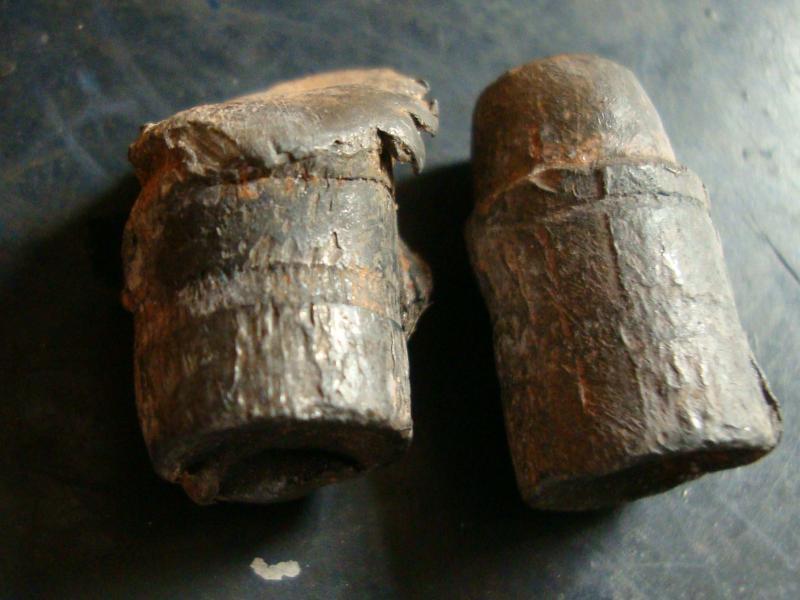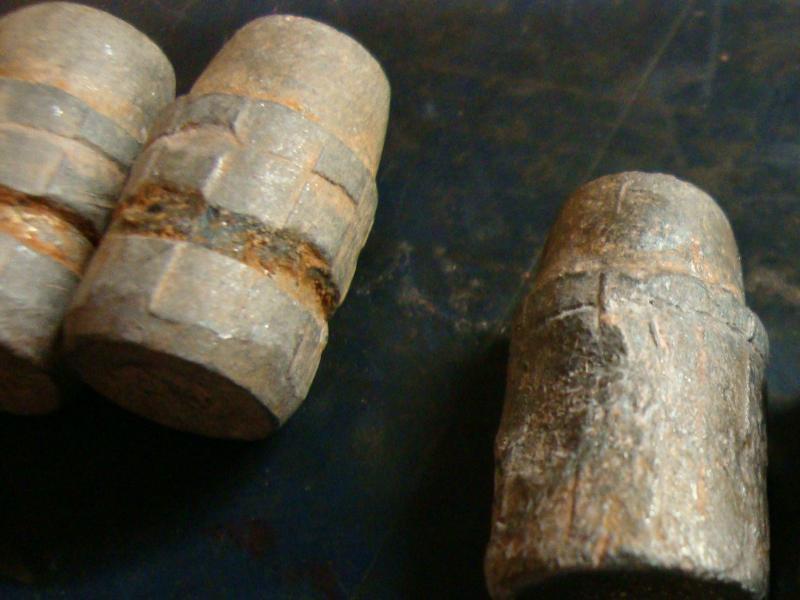(See Post #64) Some recovered bullets that sat a little long in a plastic bag. Lost some of their "shiny" in the hot, moist conditions over the past week:
These are "pre-custom expander".
Swaged bullets. Note the erosion in the rifling groove near the base. Gas cutting or galling?
"Store bought" cast bullets (on the left side of the enlarged photo) loaded more less the same as the swaged and at about the same time:
They measured the same diameter (within 0.001") as the wsaged before loading. The bevel base and their hardness make them unlikely to "bump up" to fit, so it seems the swaged bullets were sized down at loading, especially near the base. Rifling just isn't nearly as well defined. Swaged bullets work great in .22 rf arms, even revolvers, so why not larger revolver bullets? There's got to be a way to do it. Or is that a subject for another thread?
These aren't milsurp revolvers or pistols being tested currently, but those WILL be tested before it's all over. Might as well abuse some more "range refined" examples first. And one day the .43 Mauser chambered Remington Lee, and the 50-70, and maybe even some 45-70s! Then there's the 1891 ArgentineMauser patiently awaiting a bullet mould and gas checks.
- Knowledge Library

- MKL Entry of the Month
- Australia
- Austro-Hungarian Empire
- Canada
- Czechoslovakia
- Denmark
- Finland
- France/Belgium
- Germany
- Italy
- Japan
- Norway
- Russia
- South America
- Sweden
- Switzerland
- Turkey
- United Kingdom
- United States
- Yugoslavia
- Is my rifle authentic or a fake?
- Jay Currah's Lee Enfield Web Site
- On-line Service Records (Canada)
- Technical Articles/Research
- Forum
- Classifieds

- What's New?
-
Photo Gallery

- Photo Gallery Options
- Photo Gallery Home
- Search Photo Gallery List
-
Photo Gallery Search
- Video Club

- iTrader
















 PM
PM
